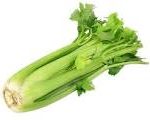GIY Weekly Column, April 14th 2018
It is fair to say that it has been a long and thoroughly miserable winter, with almost 6 months of grim weather at this stage. The impact has been minimal enough for the home-grower but we should of course spare a thought for the people who make a living from food production, particularly commercial growers and farmers. For the commercial grower the hungry gap (the gap between the last of last year’s produce and the first new-season produce) is always tortuous but it will be even longer this year, as it has simply been too cold to get sowing.
For farmers, livestock would typically be enjoying life on open grass by now, but with sodden fields and no grass growth, they have been forced to keep animals indoors. The knock-on effect, as we’ve been hearing, is a shortage of fodder with a real risk of animals starving to death if they run out. You only have to see the joy of farm animals being let out on to grass for the first time in spring, to know they don’t enjoy being in the sheds as much. After a hard winter, the arrival of spring grass growth, warmer temperatures and longer days changes the whole dynamic of farming. One can only imagine how distressing its delay must be for the farming community.
Though we’re certainly not out of the woods yet there are at least some signs that spring is taking hold. You can see and hear glimpses of it all around. Birds singing their morning chorus, buds forming on the trees, a small amount of grass growth. Everywhere seems just a shade greener. If the temperatures hold up, that should all accelerate in the week ahead. Fingers crossed.
Though we’re a long way off any major harvesting, we are enjoying the first new season greens from the polytunnel here at home now. Up to now the salad bowl has been reliant on the fabulous winter green, claytonia (or Miner’s lettuce) which I sowed late last autumn. But it is now joined by some baby pak choi, red mustard and mizuna. I find that my system is craving fresh greens after a long winter. Incidentally with the pak choi, I am harvesting them as baby leaves, rather than waiting for them to heart up, I’m too impatient for that. I just chop them and steam them over some boiling water for a few minutes and they are delicious. Add some seasoning or a little chopped chilli if you want.
I’ve been taking advantage of longer evenings to get some work done. I’ve planted my spuds, though I fret the soil was too cold. I am hoping to do the onions this weekend. Last evening I planted out some beetroot that I sowed on heat in the potting shed in January, and they should be ready to start eating in about 3 weeks time. I’ve also just transplanted some spinach in to the tunnel. Tomato plants that were sown in February have been transplanted in to module trays and have really taken off in the last week aided by the warmer days. I am already wondering whether I will have to pot them up in to pots or get away with planting them directly in to the polytunnel from there. I hope it’s the latter. I transplanted chillipeppers from their pots in to individual modules in a module tray, they are slow growing, and will be happy there for at least another 6 weeks.
The Basics, Transplanting Celery and Celeriac
Celery and celeriac are grown the same way, and look very similar at seedling stage, but their paths diverge dramatically later on, celery is eaten of course for its lovely stem (and the leaves if you want), but celeriac is a swollen root, more like a celery-flavoured turnip in shape and size. I grow both. Whereas celery is sown several times in the year (between March and May) for succession, celeriac is sown just once in March or April.
I am trying two different approaches to sowing celeriac this year.
- Sprinkle seeds in a 10cm pot of potting compost. After they germinate, but before they get too big, transplant in to module trays to grow on
- Sow them direct in the module trays
Both have germinated at this stage, and I have yet to transplant the pot-sown ones. It will be interesting (in a nerdy, not very interesting way) to see which does better. Obviously, the latter approach would be far easier if it works.
In each case, don’t forget that celery and celeriac seeds like light so don’t cover the seeds with compost after sowing. You could add a small shallow layer of vermiculite (which is slightly transparent and allows light through).
Have a look at the Celery and The Celeriac Growing Guide here.




